
5 Strategies for Success When Teaching Online
- Subject:
- Educational Technology
- Higher Education
- Material Type:
- Teaching/Learning Strategy
- Author:
- Jacob Spradlin
- Date Added:
- 09/28/2023

5 Strategies for Success When Teaching Online

This Framework is adapted by WCET from Cecilia Ka Yuk Chan's 2023 Comprehensive AI Policy Education Framework for University Teaching and Learning. It is free and openly available to anyone. It will complement the forthcoming WCET Artificial Intelligence Toolkit.
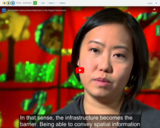
Accessibliity for students with disabilities taking online courses

Activity Sheet: This document provides an overview of how online education helps remove common barriers to accessing education, such as geographical restrictions, disabilities, scheduling conflicts, social stigma, and financial constraints. It uses simple icons and explanations to illustrate how the flexibility and accessibility of online learning platforms can expand educational opportunities to a broader range of students. This would be a useful resource for those exploring online education options, comparing modalities, or looking to increase enrollment through distance learning programs.

Adaptive learning has its origins in John Carroll’s
personalized learning concept which prioritized
allotting engaged learners the time to become
proficient in a task (1963). Today, the phrase
adaptive learning applies to three overlapping
areas involving technology and learning.
Adaptive learning technology refers to the
educational technology, courseware, and
learning systems that deliver instruction and
learning content. Personalized learning,
sometimes interchangeably called adaptive
learning, represents content, pacing, pedagogy,
and goals designed to meet students’ individual
learning needs (Office of Educational
Technology n.d.). Thus, adaptive learning
describes the combination of active,
personalized learning delivered through
adaptive learning technology (Brown et al.
2020; Kerr 2016).
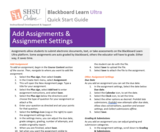
Assignments allow students to submit electronic documents, text, or media in Blackboard Ultra Courses. This walkthrough covers adding assignments to Ultra courses as well as assignment settings and grading.
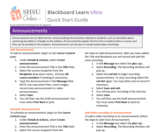
Announcements are an idea tool for communicating time sensitive material to students in Blackboard. This guide covers how announcements are added, scheduled, and posted to Ultra Courses.

This is an informational document providing an overview of Anthology Ally and its features for improving accessibility of digital course content in higher education. It covers background on accessibility regulations, a history of Anthology Ally, key terms and concepts used in the tool, and ways Ally enables engagement between instructional designers, faculty, students, and administrators to enhance inclusion. The document was created with assistance from an AI tool.

A catalog of collective commons 0 (CC0) artworks that are free to view and use.

An infographic with Quick Facts on AI in higher education by Mandy Jordan, Researcher, SHSU Online
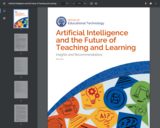
The U.S. Department of Education Office of Educational Technology’s new policy report, Artificial Intelligence and the Future of Teaching and Learning: Insights and Recommendations, addresses the clear need for sharing knowledge, engaging educators, and refining technology plans and policies for artificial intelligence (AI) use in education. The report describes AI as a rapidly-advancing set of technologies for recognizing patterns in data and automating actions, and guides educators in understanding what these emerging technologies can do to advance educational goals—while evaluating and limiting key risks.
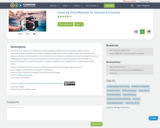
This resource is a modification of the Washington Models for the Evaluation of Bias Content in Instructional Materials (2009) that is made available through OER Commons under a public domain license. This resource attempts to both update the content with more contemporary vocabulary and also to narrow the scope to evaluating still images as they are found online. It was developed as a secondary project while working on a BranchED OER grant during summer 2020. It includes an attached rubric adapted from the Washington Model (2009).
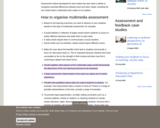
Guidance on critiquing and grading multimedia assigments. This guide provides nine tips for understanding and organinzing the structure of multimedia assessment.
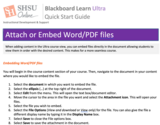
When adding content in the Ultra Course view, you can embed files direclty in the document, allowing students to view them in order with the desired content. This guide shows you how.
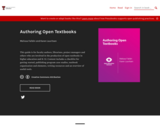
"This guide is for faculty authors, librarians, project managers and others who are involved in the production of open textbooks in higher education and K-12. It includes a checklist for getting started, publishing program case studies, textbook organization and elements, writing resources and an overview of useful tools.

This video covers using the Blackboard Learn Ultra AI Design Assistant to auto-generate suggested course content in the form of Learning Modules.
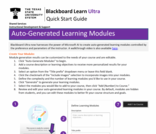
This Quick Start Guide covers using the Blackboard Learn Ultra AI Design Assistant to auto-generate suggested course content in the form of Learning Modules.
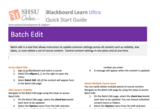
Batch Edit is a tool that allows instructors to udpate common settings across all content such as visibility, due dates or even delete content. This guide covers all of those features and more.
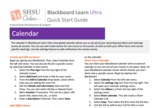
The calendar in Blackboard Learn Ultra view global calendar allows you to see all of your upcoming due dates and meetings across all courses. You can see and create events for one course or all courses, as well as mark your office hours and course-specific meetings. Use the settings feature to add notifications for certain events.
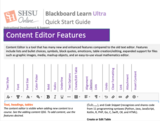
This document delineates the features of the Blackboard Learn Ultra Content Editor.